“The Hunter’s Hidden Gem: The Story of Hexham Wetland” – |
|||||||||||||||||||||||||
| A juvenile black-necked stork he banded recently fledged. "It is currently feasting on eels, amphibians and invertebrates," Mr Kyte said. "This is our first confirmed fledging of a banded black-neck stork juvenile in the Hunter." The bird has been nicknamed "Pillow" because it has a pink and yellow band. |
The black-necked stork is endangered in NSW. The Hunter is close to the furthest south they go. "We have them breeding on Hexham Swamp. We didn't 10 years ago," Mr Kyte said.
| The Ironbark Creek floodgates were opened from 2008 to 2013, helping to restore the environment. "Now they're breeding there, we're keen to monitor the population and the young so we can find out where they're moving to," he said. "Not a lot is known about where the young go after they leave the nest." |
"So by putting coloured bands on their legs, we're hoping these birds will be seen in a few years' time. "They could turn up down south or in Queensland. We don't really know."
Mr Kyte uses a drone to monitor the nest site and birds on Hexham Swamp. "We don't want to disturb them any more than we have to," he said.
"When we find the young are a suitable age, we climb the tree and bring them down from the nest, put bands on their legs, weigh and measure them and put them back." His work involves counting birds, recording observations and submitting his findings to a national database "so we can monitor bird populations, biology and movement".
"The biology relates to their feathers. We look at the different stages of the feather moult. All birds shed old feathers and grow new ones," he said. "We also look at their breeding activity and give them health checks. Parasites could be affecting them."
When he catches birds, he puts metal bands on their legs, which have a unique number. "We measure and weigh them because there's not a lot known about many Australian birds," he said.
"The reason we band them is we could possibly sight and catch them again." Or they could be seen elsewhere in the future and "we can then estimate their age and distance they've travelled".
"More often than not we use mist-nets to catch the birds. You have to be qualified to do that. The welfare of the birds always comes first," he said.
"If we have any doubt about the welfare of the bird, we release it quickly. My work is monitored by the government to ensure accountability and that guidelines are followed. "I'm not a one-man band. I have an experienced team with me."
Mr Kyte said he had "always cared for native wildlife and the environment". His passion had grown with greater threats to nature from "the expansion of towns and cities".
He said the swamp was "a very rich environment". "There are threats from human encroachment that need to be addressed. "The riparian fringes of the swamp sustain lots of birds, not just waders."
Australia had lost a lot of green corridors "where birds can leapfrog from one spot to another". "To have an area with a rich environment is so important to maintain, protect and look after."
Part 4B: 'Waiting for them to poop': researcher's dedication to understanding our birdlife - By Damon Cronshaw
"In some spots within the Hunter Wetlands National Park, you feel like you are a million miles away from the city," said Ms Williams, a University of Newcastle researcher.
| "As a birdy person, I've always been in awe at the immense diversity of birdlife found at many of our local wetland areas," she said. "It's not just the waterbirds and shorebirds that call these areas home. You can find all kinds of birds, everything from finches to raptors." She said the wetlands were a calming place. "It's nice to be surrounded by nature and an abundance of birdlife." |
"My research addresses a few pieces of the puzzle," Ms Williams said. She aims to pinpoint areas that should be prioritised for shorebird conservation.
Her research - funded by Hunter Local Land Services - reflects a desire to protect a jewel of the region's natural environment. She explores wetland areas in the Hunter Estuary, such as Hexham Swamp, Ash Island, Tomago, Stockton Sandspit and Fullerton Cove.
Part of her mission is to determine what foods the birds are eating. "I follow around shorebirds that are eating at low tide, waiting for them to poop.
"I then scurry over and scoop up the poop, take it back to the lab, and look at the DNA. "It can tell me what invertebrates the birds are eating."
She also studies what plants support the shorebird food chain. For this, she collects leaf samples from wetland plants and takes "a drop of blood from the birds that we catch".
"We catch the birds using mist nets, either late at night or in the very early hours of the morning. "Sometimes we're out on the wetland/mudflat at 2.30am." The work must be done in the darker hours, so the birds don't see the nets.
"We are collectively studying the movements of the shorebirds by catching them and fitting them with radio transmitters and coloured leg flags," she said.
An important part of her work is investigating whether "introduced red foxes are a predatory risk to the birds at their high tide roosts". "I examined the DNA present in the scats to see what types of birds the foxes are eating. "Thankfully there wasn't any shorebird DNA detected, but there were plenty of waterbirds, pigeons and even a chicken."
Ms Williams is researching a variety of shorebirds, but mostly the migratory types. "They are the ones most under threat and suffering the most severe population declines in the Hunter," she said.
The species she studies migrate annually between the northern to southern hemispheres. They breed in the north, as far as Siberian Russia and Alaska. They return to the south - places like the Hunter during summer - to spend the non-breeding season. "The size of these birds varies greatly from the tiny red-necked stint to the world's largest shorebird, the far eastern curlew."
She said their "incredible migration journeys" were impressive. "It was extremely exciting in April this year when one of our bar-tailed godwits that we colour-flagged in the Hunter was spotted on a mudflat in southern Japan. "This species is the current record-holder for the greatest single non-stop migratory flight."
One of these birds was recorded flying 13,500 kilometres from Alaska to Tasmania last year. "While our bird may not have flown quite that far, its effort is still very impressive to me."
Ms Williams said she had "always had an immense appreciation for wetlands and the vital roles they play for many groups of organisms". This began when she volunteered at the Hunter Wetlands Centre while in high school.
Her colleague Mattea Taylor - also a University of Newcastle student - has a different research project in the wetlands. "My focus is the threats shorebirds face from industry disturbance and metal pollution," Ms Taylor said.
She's collecting data on pollution from old copper smelters, agriculture and the coal industry. "Different birds could be exposed to different metals, depending on where they are foraging," she said.
Ms Taylor said wetlands play an important role for the environment and people. "They are a buffer for storms and toxins. Wetlands tend to be a good sink, preventing toxins from getting further into the environment," she said.
Hunter Local Land Services is doing a lot of work restoring the wetlands. "Historically in the last 100 to 200 years, people have made changes that made the Hexham wetlands more freshwater than estuarine," Ms Taylor said. "They changed the habitat."
Since the Ironbark Creek floodgates were opened from 2008 to 2013, the habitat is changing again. "Hopefully that's for the better. It's a complicated but important site for some species of shorebirds and waterbirds," she said.
Her research "strongly builds on the knowledge base of the Hunter Bird Observers Club".
Part 5: Swamp 'creature' and strange noises sparked bunyip tales at Hexham - By Damon Cronshaw
Link to Newcastle Herald article (for subscribers):
https://www.newcastleherald.com.au/story/8452204/unveiling-the-secrets-of-australias-bunyip-legend/?cs=7573
| It was the "eerie booming call" of an elusive bird that led to the myth of the Hexham bunyip. The myth may have been solved in the mid 1800s, but that didn't stop people believing it in the decades ahead - partly driven by the tabloid press and, no doubt, campfire tales. |
University of Newcastle archivist Gionni Di Gravio said the bunyip myth "rolls into Aboriginal legend". The monster-like creature became part of Australian folklore from about 1845, but the Indigenous people had their own story. They labelled the Hunter River bunyip as "Yaa-hoo".
"The point of these Aboriginal stories was to keep kids out of watering holes and places like Mount Sugarloaf," Mr Di Gravio said. The stories seemed to carry the message: "Don't hang around in swamps because you don't know what can happen - you could be taken by anything or fall into trouble".
He said the bunyip myth "seemed to combine a lot of things into one gigantic monster". And the press, of course, love a scare story.
The Newcastle Sun reported in January 1924 about a "recently discovered bunyip at Hexham".
The following year, a story in The Don Dorrigo Gazette and Guy Fawkes Advocate was titled, "Hunting the Bunyip of Hexham Swamp."
"Three men declared they saw the Bunyip of Hexham Swamp in 1879," the story claimed. The men, who were duck hunting, heard "a tremendous roar, like that of a lion". They also saw "eyes like golden orbs in the night".
The bitterns have yellow eyes but their call is usually described as a boom, rather than a roar. "Whatever they saw, they got spooked and ran off," Mr Di Gravio said. "It makes for a good read, especially when you find out what the culprit was."
William Turton told the Newcastle Sun that he and his grandfather John Hannell solved the mystery of the Hexham Bunyip in 1864.
The bunyip, he wrote, proved to be "a bird named the bittern".
| BirdLife Australia describes the bird as a "stocky, thick-necked heron", with a call that can occur in "sets of several booms". During spring and summer, males "utter a distinctive, resonant bass booming call, preceded by up to three quick short, quieter gasps". The bird's call is thought to be associated with breeding. It is most frequent at dawn and dusk and may continue through the night. |
In more recent times, ecologist Ian Benson has studied this partly nocturnal bird at Hexham.
Hunter Local Land Services contracted Mr Benson to conduct surveys of the endangered bird through a national Landcare program. "A lot of community members were involved - Hunter Bird Observers Club, Worimi Green Team and others," he said. They listened for the bird at dusk with acoustic recorders in "various locations throughout the Hunter Estuary". "They were put out for a couple of weeks with programs to record throughout the night. We collected that data and analysed it," he said.
Hexham Swamp was the main focus of the Hunter Estuary research. "Last season we confirmed at least four calling males and at least four territories within Hexham Swamp," Mr Benson said. "There was probably more than that, but it's a bit harder to be definite on how many exactly there are."
The bitterns are not often seen. "They're very cryptic. Often when people see them, they're seen in flight," he said. "They lift out of the reeds and swamp and fly a couple of hundred metres, then lob into the swamp somewhere else. "But they might only need to do that once a day at dusk."
His research led him to believe the bird was rare in the Hunter Estuary. "We still don't know if they're resident all year round or if they come and go with the seasons," he said. "Outside of when they're calling, it can be very hard to confirm if they're absent from the estuary or just not calling."
He said individual birds "all tend to call a little bit differently". "They almost have their own little call signature."
The bird grows to about 67 centimetres tall. "They're a relatively big bird, kind of like a heavy set white-faced heron," Mr Benson said. "They're mottled brown - not all that glamorous."
Have you perhaps spotted a strange creature in the Hunter? Join the discussion in the comment section below.
Part 6: On the hunt for mosquitoes in Hexham swamp, as Ozzie the Mozzie looms large - By Damon Cronshaw
Link to Newcastle Herald article (for subscribers):
https://www.newcastleherald.com.au/story/8452227/mosquitoes-and-wetlands-hexham-swamp-update/?cs=7573#slide=7
From 2008 to 2013, the floodgates were opened to restore tidal flows from the Hunter River at Hexham - greatly improving the area's habitat.
There was, however, concern about whether this would lead to more mosquitoes. "There's no point improving a wetland if you're just going to increase mosquito problems," A/Prof Webb said.
| "It's not only the risk of disease, but nuisance mosquito biting of people who live near wetlands can have a pretty disruptive impact on their quality of life. "Anyone who lives on the coast or near wetlands should expect mosquitoes to be active every summer. "But it's about making sure it's not a disproportionate increase compared to existing wetlands." |
In the first summer after the floodgates opened, A/Prof Webb said "we did see a pretty substantial increase in mosquitoes". "After that, the system reverted from a freshwater to saltwater environment. The numbers have now dropped back to what you would normally expect out of a healthy estuarine wetland."
Better water movement in and out of the wetland has helped. "There's a stack more fish knocking out the mosquito larvae," he said.
"Then you've got all the birdlife and aquatic life that was absent from Hexham Swamp before the rehabilitation work started." He said mosquitoes were "food for a range of animals like birds, bats, fish and frogs".
Other wetlands in NSW, particularly those in urban areas, showed that "a high mosquito population is a symptom of poor wetland health". "Making the wetland healthier doesn't eradicate mosquitoes by any means, but it keeps them in check or to a manageable level.
"At the moment, the numbers coming out of Hexham are what you would expect from a normal healthy estuarine wetland. "On balance, there's no change in the mosquito risk for mozzie populations associated with Hexham."
Since the floodgates opened, the area had "transitioned from what essentially looked like a cow paddock to a really flourishing wetland". "It's quite staggering the amount of wildlife that's there." He lauded the abundance of fish, insects and birdlife. "They're the things that are indicative of the environment being very healthy."
Asked if mosquitoes had any benefits or whether they were purely pests, he said "It's a good question". "I often joke that scientists are really good at working out how to kill mosquitoes or how they make us sick, but we're not very good at working out their ecological role or their importance to the environment.
"We know they're food for a range of animals. The thing is, they're very adaptive to suitable environmental conditions. "They're pretty good at exploiting habitat that's free of any other animals that eat them. That's why their numbers can increase so dramatically." Mosquito numbers and disease risk change each year, with rainfall, temperature and habitat availability.
Nevertheless, Ross River fever occurs almost every year around the Hunter and Mid North Coast. "The Department of Health does monitoring [for the virus] across NSW, including in the Hunter," A/Prof Webb said.
"Generally speaking, the risk of Ross River is a little bit lower south of the Hunter River because there aren't as many kangaroo and wallaby populations. "Mozzies pick up the virus most commonly from biting wallabies and kangaroos. They don't hatch out of the wetlands already carrying the virus."
While there's a few kangaroos on Kooragang Island and occasionally around Hexham, more are found further north towards Medowie and Tomago.
"Despite the lower health risks around Newcastle, don't be complacent. Take steps to protect yourself and family from mosquito bites," he said. "Cover up and apply insect repellent when you're outdoors over the summer."
Do you think the Hunter has a mosquito problem? Join the discussion in the comment section below.
Part 7: Ecotourism boost: check out the plans for the Hexham Swamp trail - By Damon Cronshaw
Link to Newcastle Herald article (for subscribers):
https://www.newcastleherald.com.au/story/8451773/hexham-swamp-ecotourism-explore-wetlands-and-rail-history/?cs=7573
The future of Hexham Swamp features a path that will take people closer to nature and open up ecotourism opportunities, advocates say.
The shared path, for cyclists and walkers, will run from Shortland to Tarro, along the western side of Hunter Wetlands National Park. It will run along land that housed an old Hunter Water pipeline that was built in 1923, but later removed. A second section of the path will run from Hexham to Minmi, along part of the old railway.
| Richmond Vale Rail Trail supporters' group vice president Terry Lewin said this section "goes back to the 1850s and 1860s". "That was all private coal line. The trail will enable people to explore that area in ways they never have," Mr Lewin said. "You'll be able to ride through there and get a mixture of information about wetlands and rail, mining and Indigenous history. |
A 13-kilometre Newcastle section was approved by the Hunter and Central Coast Joint Regional Planning Panel in 2021. However, a 2.7-kilometre section at Shortland that runs through the wetlands, on disturbed land, is yet to be approved.
| It falls under the Hunter Wetlands National Park plan of management. The plan states that the Nationals Parks and Wildlife Service "will support the development" of the Shortland and Minmi routes. Mr Lewin said the wetlands part of the trail "goes over land that is already disturbed". "That's the critical bit," Mr Lewin said. |
Horses, dogs and any other domestic animals will not be allowed on the track.
Mr Lewin said people could combine a cycling trip with the experience of going to the nearby Hunter Wetlands Centre at Shortland. "You'll be able to learn about the wetlands and experience them," he said. It's a RAMSAR-listed wetland. This type of wetland is considered rare or unique and important for conserving biological diversity.
"The only people that can go in there at the moment are either the National Parks and Wildlife Service because they use that corridor, and the Hunter Bird Observers Club," Mr Lewin said.
Hunter tourism entrepreneur Will Creedon said there had been a major consumer shift "around ecotourism, wellbeing and nature". "It's one of the fastest growing areas in tourism," Mr Creedon said.
He said the transformation of Hexham Swamp's environment meant "we're very relevant to that segment" for local and global tourists. "Anything to do with nature has a calming influence on people. It also brings out the ability to connect family and friends."
Mr Creedon, a former Tourism Hunter chairman, said the swamp's restoration showed "an evolution of our thinking". He said protecting the area would ensure its future.
"We can repurpose existing space and geography into something uniquely different and beautiful," he said. The pursuit of the trail showed "the human spirit of perseverance and determination". "This has been going on for a long time. I know volunteers who have dedicated decades to this. They have a vision to complete it."
The two trails in the Hexham Swamp area will be the "coastal wetlands part" of the 32-kilometre rail trail, which begins in Kurri Kurri. This will be part of a 100-kilometre cycle trail dubbed "Shiraz to Shore", which includes plans for a Cessnock/Hunter Valley loop.
The shared pathway will provide a link for cyclists between Kurri Kurri, Tarro, Minmi and Shortland without having to ride on busy highways. The route passes through old railway tunnels and over bridges, as well as alongside wildlife habitat.
Cessnock City Council has approved its part of the rail trail.
The project traverses Newcastle and Cessnock local government areas and a small part of Lake Macquarie.
Mr Lewin said the rail trail was "one element in a Hunter cycle tourism strategy" that councils were jointly developing for the region.
Will you use the shared path for cyclists and walkers from Shortland to Tarro? Join the discussion in the comment section below.
Editorial: Hunter Wetland's beauty is hiding in plain sight
Link to Newcastle Herald article (for subscribers):
https://www.newcastleherald.com.au/story/8488105/why-the-hunter-wetlands-is-among-the-regions-greatest-natural-assets/?cs=7573
Thousands of Hunter commuters drive past the Hunter Wetlands each day without giving a thought to its enormous environmental and cultural value.
The Newcastle Herald series The Hunter's Hidden Gem has showcased the natural and indigenous history, twentieth century decline and ultimate rehabilitation and future potential of the 2000 hectare wetland area.
| When European settlers arrived in the area that was to become Hexham they found an oasis teeming with plant and animal life that had sustained the Awabakal and Worimi peoples for several millennia. Hexham became a vital transport hub as the Hunter Region evolved throughout the nineteenth and twentieth centuries. |
By the second half of the twentieth century plans were afoot to reclaim what was left of the wetland for urban development. Many regard the installation of the Ironbark Creek floodgates in the early 1970s as a low point in the region's environmental management.
Whatever so-called benefits were achieved by this project were more than offset by negative environmental impacts. Hunter River fish stocks declined immediately, surrounding mangroves and saltmarsh died off and the salt water mosquitoes were replaced by a freshwater species.
It took more than two decades for an ambitious rehabilitation project designed to restore the wetland to be put in place. The floodgates were progressively reopened from 2008 to 2013 to gradually re-introduce saltwater tidal flows from the Hunter River at Hexham.
After decades of toil and perseverance, the project is now regarded as one of the world's most significant wetland rehabilitation projects.
The vegetation survey in 2021 found the area of mangroves had increased to 185 hectares, saltmarsh to 109 hectares and tidal mudflats and shallow ponds to 135 hectares. The vegetation mapping indicates a continuing transition of habitat in a mosaic fashion including mangrove recruitment and expansion of saltmarsh, ponds, channels and mudflats.
These estuarine wetland habitats covered 520 hectares in 2021, approaching the predicted minimum increase of 600 hectares.
The next stage of the Hexham wetland project is to make it more accessible for the wider community.
A proposed cycleway that would extend from Shortland to Tarro before connecting to the Richmond Vale Rail Trail would provide an ideal entry point to thousands of Hunter residents and visitors. Any government with an eye to investing in the region's ecotourism potential would be wise to consider supporting this project.
Similar projects have already been realised at Glenrock Lagoon and the Fernleigh Track with great success.
Hunter residents are justifiably proud of the region's natural beauty and in recent decades have demonstrated their commitment to preserving it.
Hopefully the Hunter Wetlands will be held in the same popular regard as the region's other natural icons.
Issue: 40,117
Extracts from Parts 4 to 7 of Newcastle Herald series, plus Editorial (January 2024)
below
| extracted_material_-_newcastle_herald_series_jan_2024_-_parts_4_to_7_-_the_hunters_hidden_gem_-_the_story_of_hexham_wetland.pdf | |
| File Size: | 7434 kb |
| File Type: | |
News Archive
(Blog post links and downloads)
RVRT Newsletter June 2024
An Opportunity to Optimise the Tarro-Beresfield Connections to the RVRT/M1 Extension
Congratulations and Thanks to Billy Metcalf - Our ‘Founding President’
An Unofficial Taster for the Proposed Shiraz to Shore Trail - March 2024 (Updated April 21st 2024)
Stay Tuned - Development of the 'Shiraz to Shore' Trail Proposal by Hunter JO is gathering pace
Benefits, Motivators, Deterrents and Potential Usage – Some Clues from Recent Cycling and Rail Trail Reports and Assessments
Australia Day 2024 – Community Environmental Award to RVRT Supporters' Group from Cessnock City Council
“The Hunter’s Hidden Gem: The Story of Hexham Wetland” – Extracts from Parts 4 to 7 of Newcastle Herald series, plus Editorial (January 2024)
“The Hunter’s Hidden Gem: The Story of Hexham Wetland” – Extracts from Parts 1 to 3 of Newcastle Herald series (January 2024)
Recent RVRT Ministerial Visit and Shiraz to Shore Update: Highlighting Coastal Wetlands and Kau-Ma Park Panorama
Engagement, Co-operation and Connectivity – Keys to the RVRT’s Success and Longevity [Includes images from Sept. 29 2023 planning-related RVRT visit by local MPs and Councillors]
The RVRT as a Conservation Conduit - Another one of its Multi-layered Benefits (August 2023)
Suggested Strategic Zones (or Themes) – For characterising broad segments within the Richmond Vale Rail Trail (RVRT) [and ‘Shiraz to Shore’ Hunter Cycle Trail]
RVRT Snapshot & Points of Interest – July 2023
Relevance of the Richmond Vale Rail Trail (RVRT) for Lake Macquarie Residents and Visitor
Have your say on how we can make cycling easier, safer and more accessible in Shortland and Tarro
Speers Point (Lake Macquarie) to the Richmond Vale Rail Trail (RVRT) – Building on Existing and Proposed Shared Pathways
NPWS-RVRT Landcare Volunteers First Planting Day within the Proposed Mid-trail Precinct (Stockrington State Conservation Area)
Media Release (by RVRT Inc.) Planning Approval Granted for thew Western Section of the Richmond Vale Rail trail (RVRT) within Cessnock LGA (approx. 14.4 km) - Stockrington to Log of Knowledge Park, Kurri Kurri
Appreciating the Multi-layered Benefits of the Richmond Vale Rail Trail (RVRT) – at a Local, Regional, and State/National Level (pdf download)
RVRT Newsletter – February 2023
RVRT Inc Group Submission about REF for Western Section of RVRT - July 2nd 2022 (pdf download)
Media Release: Planning Approval Granted for Initial LGA Section (approx. 13 km) of the Richmond Vale Rail Trail (RVRT) - Shortland to Minmi/Fletcher via "Hexham Junction" and "Minmi Junction"
Newcastle Rotary Club presentation – Richmond Vale Rail Trail
“Towards the Richmond Vale Rail Trail” Book Launch
Active Transport: The Richmond Vale Rail Trail Conference
Archives
June 2024
May 2024
March 2024
February 2024
January 2024
November 2023
October 2023
August 2023
July 2023
June 2023
May 2023
February 2023
December 2021
July 2018
September 2017

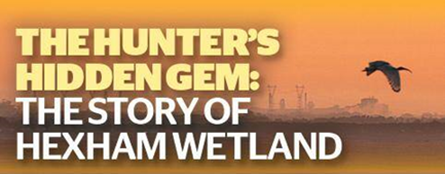
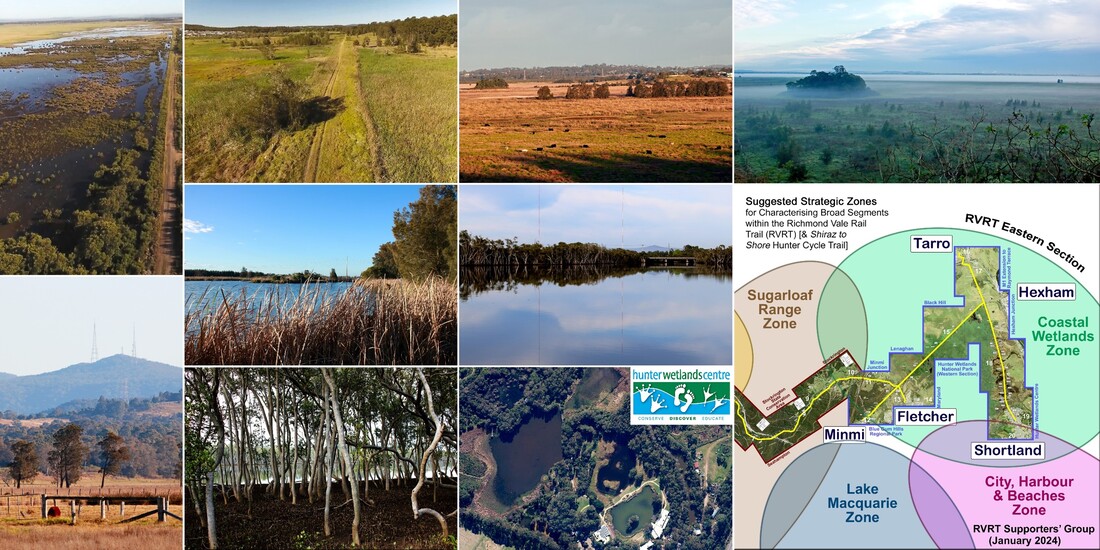
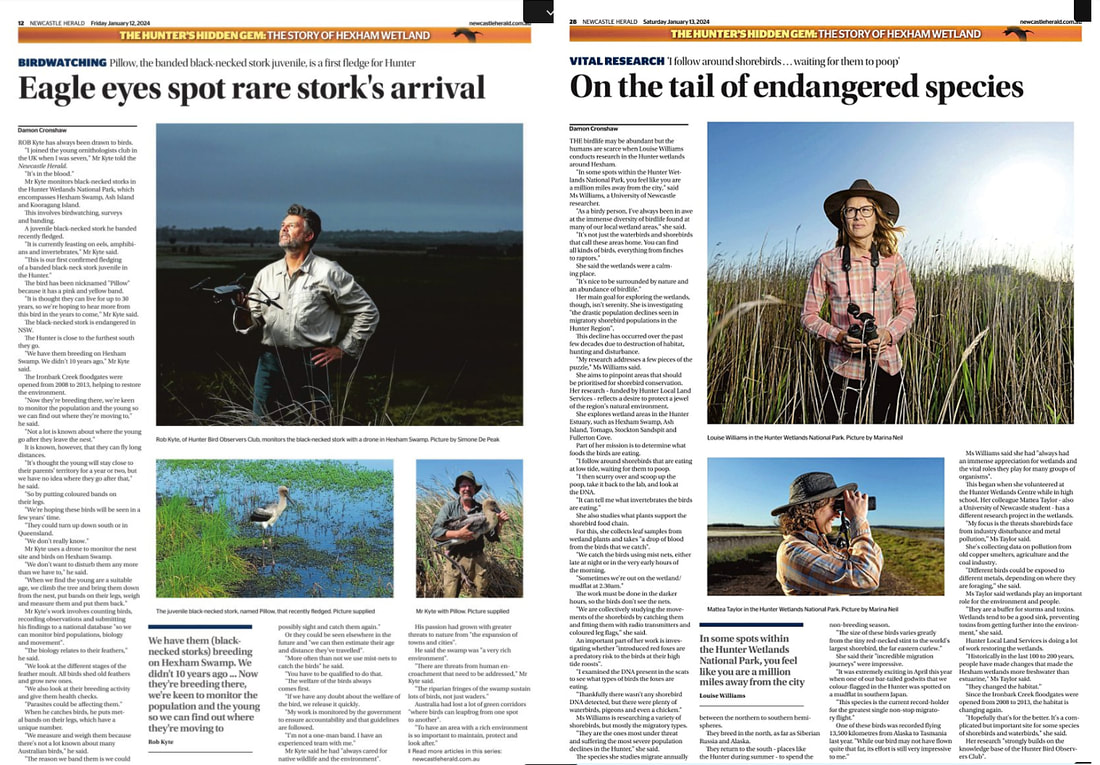



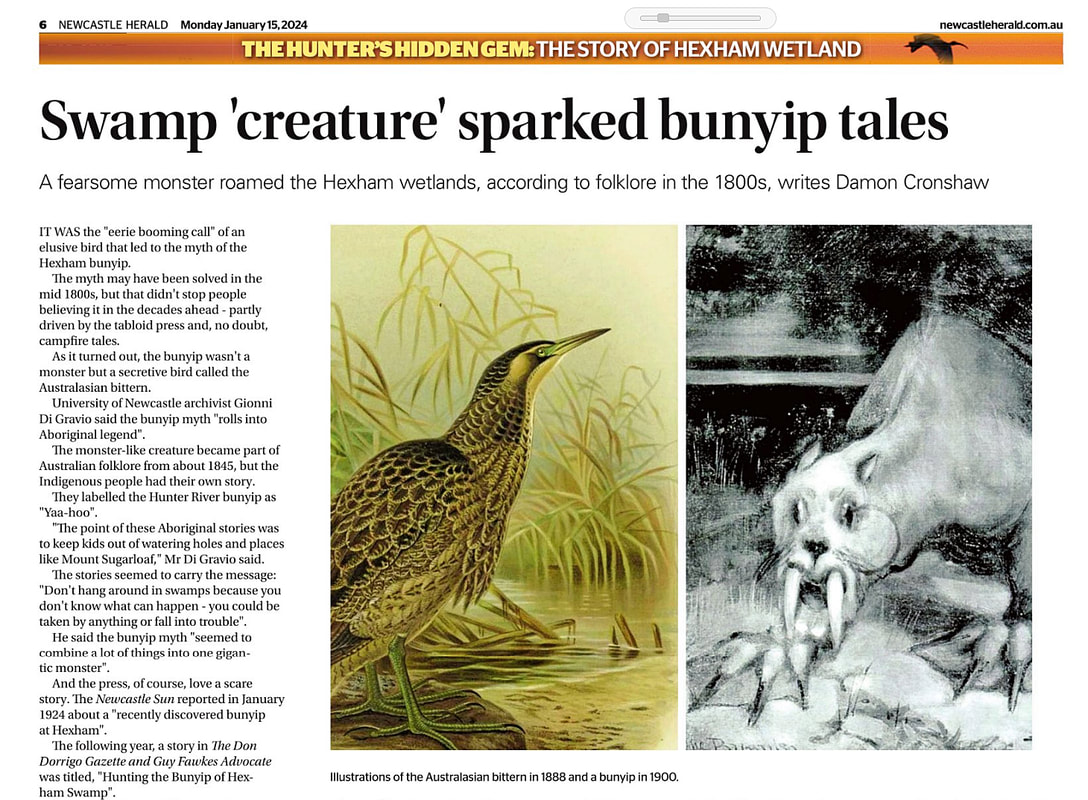
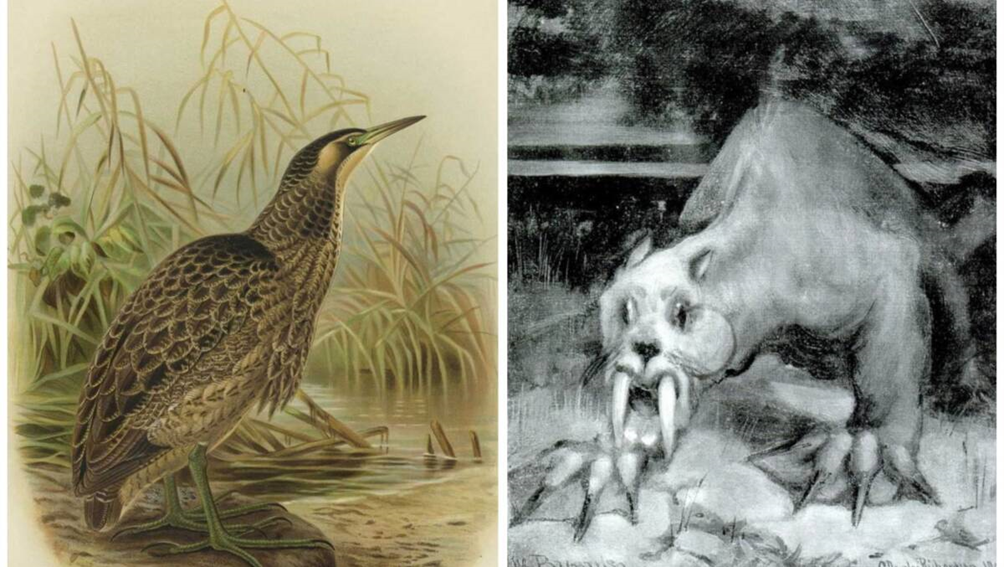
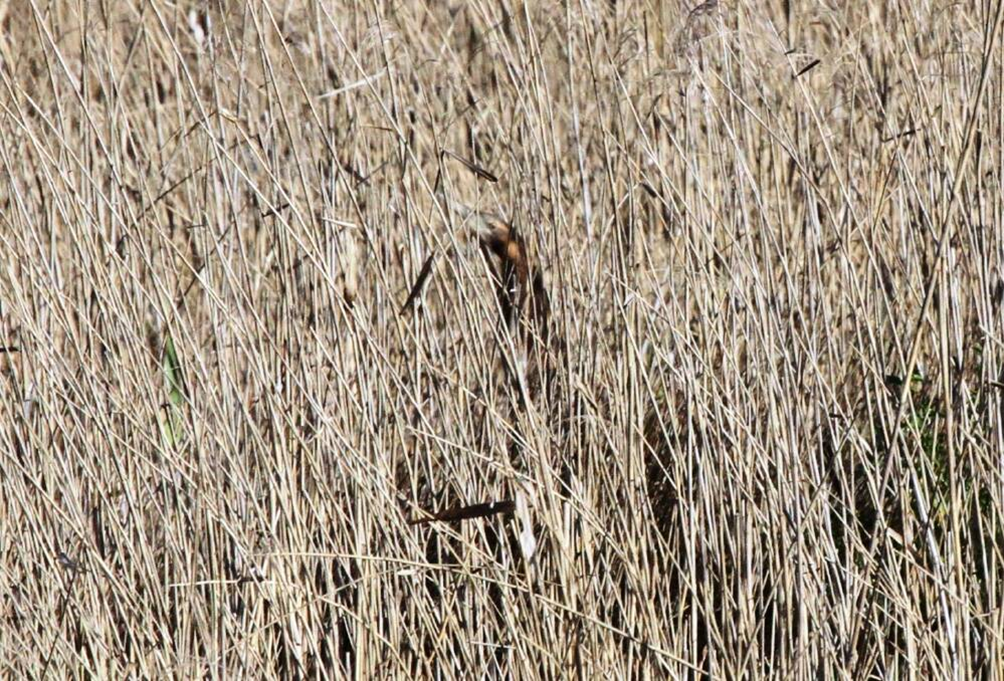



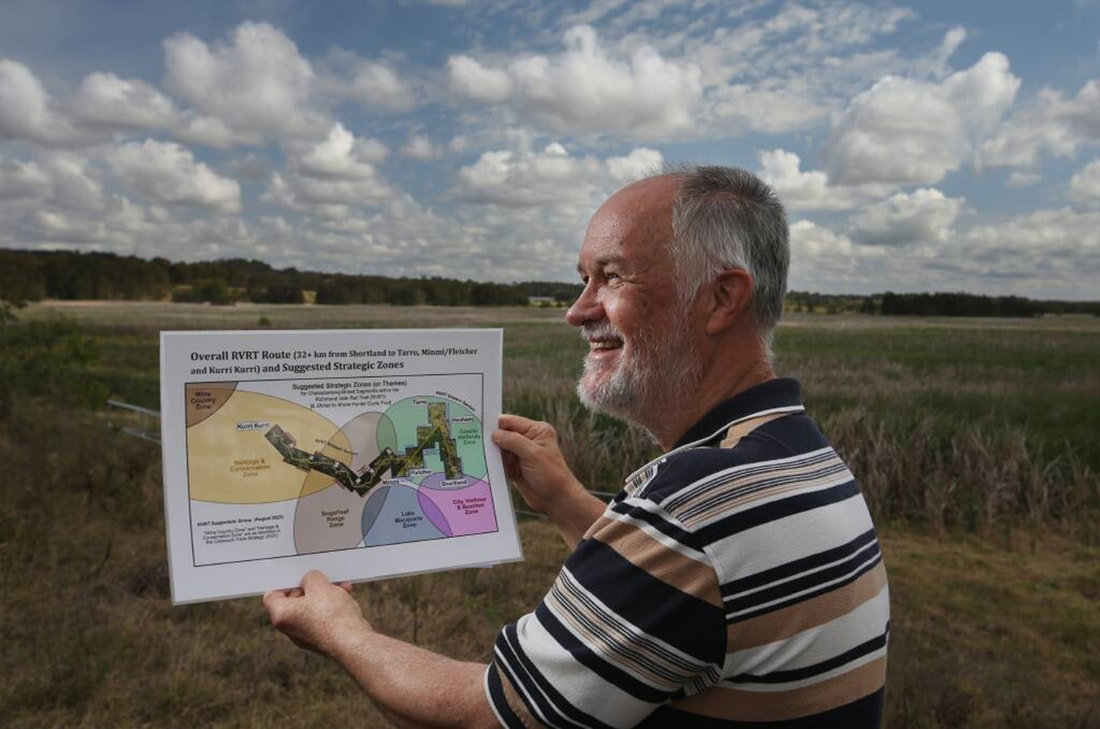
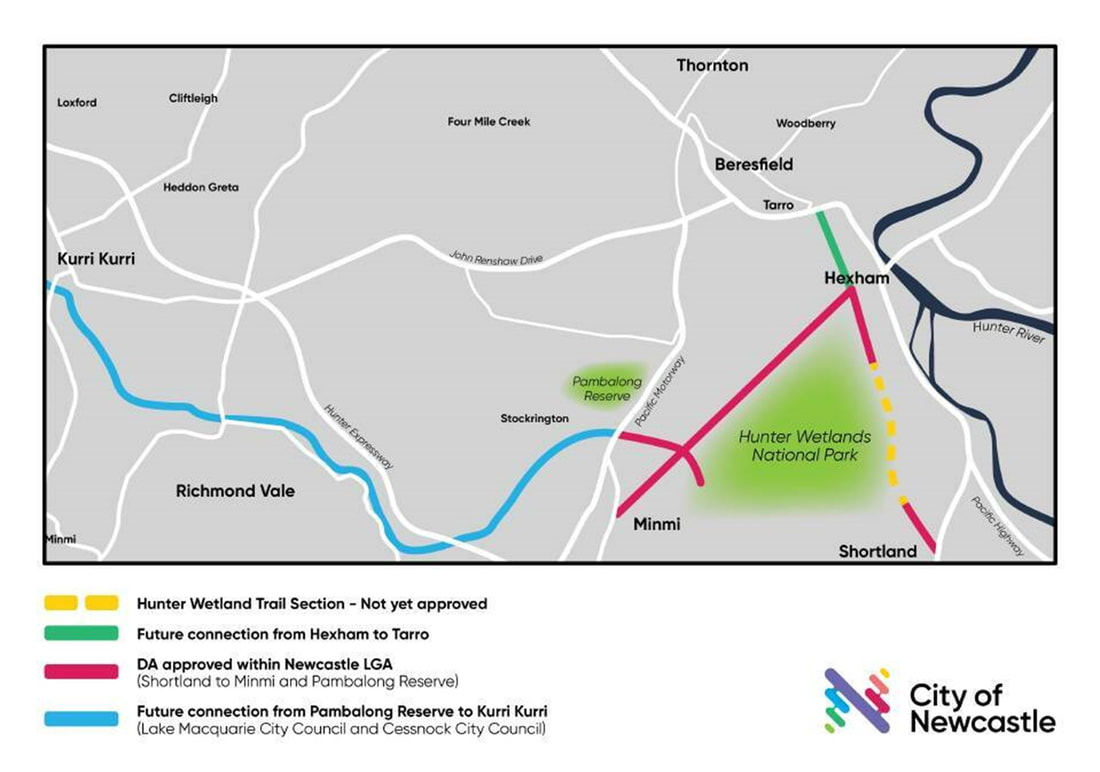
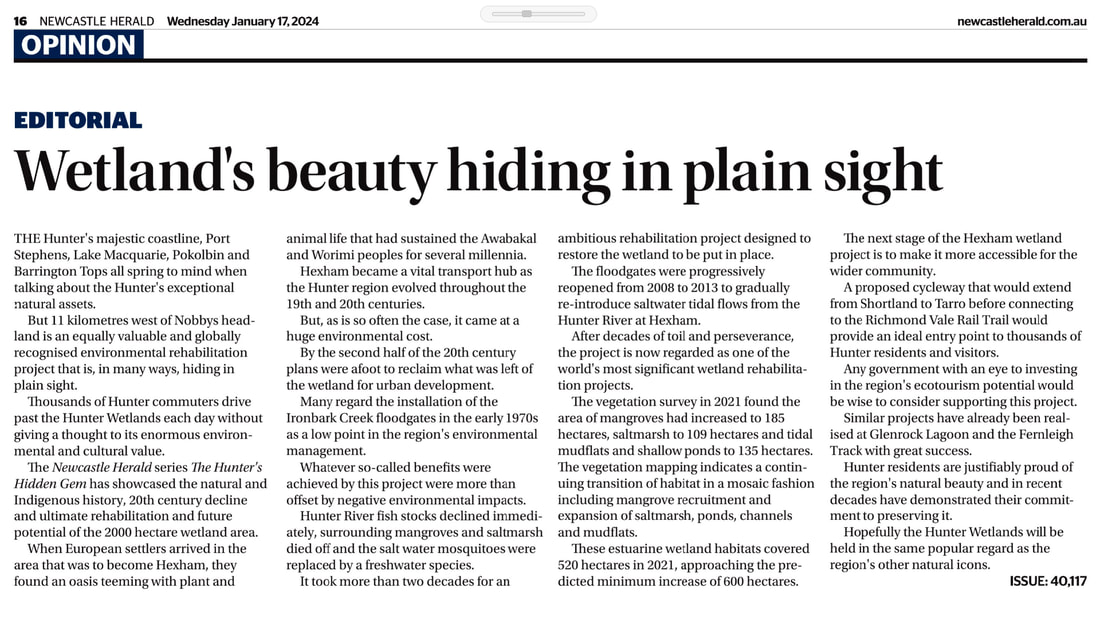

 RSS Feed
RSS Feed


